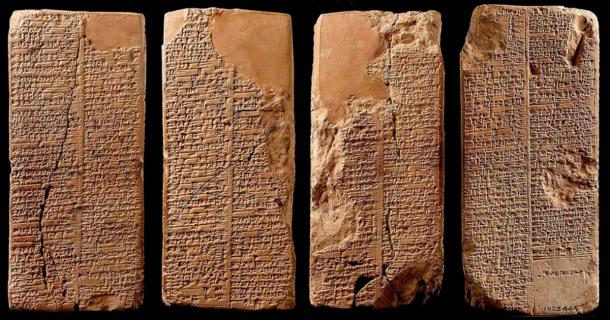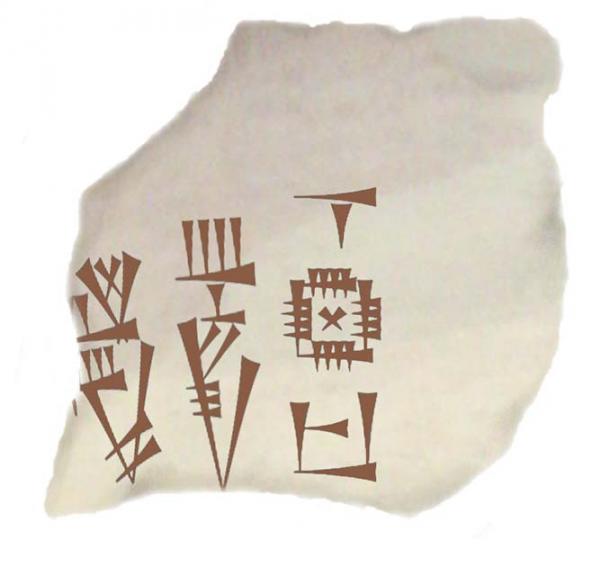
Enmebaragesi, the Semi-Mythical King of Kish
Sumer is regarded by many scholars as the cradle of human civilization. Its history - although veiled in enigma - is so intriguing and offers a wealth of new discoveries. From the first writing system, to complex technologies, all the way to first cities and powerful rulers. Enmebaragesi is one such ruler, one of the earliest recorded in Sumer history. He was the King of Kish, a powerful city-state of the time, and is recorded in several inscriptions. However, it is unclear whether he was a real monarch - or a legendary figure. Here’s what we know.
Enmebaragesi, the Priest Who Permeates the Throne
Enmebaragesi, also known as En-me-barage-si or En-me-bara-gisi, was an ancient Sumerian king who ruled the city-state of Kish. He is considered one of the earliest known rulers in recorded history. Kish was an important city in ancient Mesopotamia, located in what is now modern-day Iraq. It was one of the most significant and influential city-states in the early history of Sumer, and played a crucial role in the development of the entire Sumerian civilization. And, in order to thrive, such a city definitely needed a powerful ruler.
Kish is particularly renowned for being the center of early kingship in Sumer. The Sumerian King List, an ancient text listing the names of early Sumerian kings and their reigns, includes many rulers from Kish. And it is exactly from this list that we learn of Enmebaragesi. Enmebaragesi's reign is believed to have been during the Early Dynastic Period (approximately 2900–2350 BC) of Sumerian history. Unfortunately, historical records from this time are scarce, and much of what we know about him comes from fragments of ancient inscriptions and references found in later Sumerian king lists.

Weld-Blundell Prism, a clay cuneiform inscribed with the Sumerian Kings List. (Public Domain)
According to these ancient sources, Enmebaragesi was a prominent ruler of Kish and is often described as a powerful and successful king. His name is mentioned in various Sumerian texts, and around four inscriptions bearing his name survive. Only one, however, names him as the King of Kish, and is housed today in the Baghdad Museum in Iraq.
- Enki: The Epic Mesopotamian Water God Who Saved Humanity
- The Ancient Epic of Gilgamesh and the Precession of the Equinox
A Mythical Figure or a Real Monarch?
Enmebaragesi ruled at a time when Kish had ultimate hegemony over all of Sumer. He was the penultimate ruler of the First Dynasty of Kish, and is recorded in the Sumerian King List as having ruled for 900 years. In this list, many rulers - some of them certainly mythical - have reigned for incredible numbers of years. For example, Alalngar, the Second King of Eridu, purportedly reigned for 36,000 years. But according to the narrative, a great flood swept the earth, and following the deluge, these reigns got progressively shorter.
Due to the fact that Enmbebaragesi’s name has been confirmed in archaeology, we can conclude that he was a historical figure, and that his reign was certainly not 900 years. Inscriptions with his name introduced an enormous documentary leap in archaeology. It was a shift from mytho-history to actual history, since he is the earliest ruler on the King list whose name is attested directly from archaeology. A piece of an alabaster vase, dated to the Early Dynastic period (c. 2900-2800 BC), bears the inscription “Mebaragsi, King of Kish”. This was the early name of Enmebaragesi. The cuneiform script used is of an archaic form, confirming the date of its creation.

Alabaster vase fragment transcription of Enmebaragesi as king of Kish (illustration). Transcription of the original in the Iraq National Museum. (पाटलिपुत्र/CC BY-SA 4.0)
He is also mentioned in the Sumerian King List and the Old Babylonian Tummal Inscription, where it is said:
“Enmebaragesi,
the king in this very city (Nippur),
built the House of Enlil,
Agga the son of Enmebaragesi,
made the Tummal pre-eminent.”
From the list, we also learn that during his reign, Kish had hegemony over the entire territory of northern Babylonia and the most northern section of southern Babylonia cities such as Nippur, Isin, and Eresh, and large portions of the Diyala Region. Enmebaragesi succeeded Iltasadum on the throne, where he reigned for 900 years, supposedly leading a successful campaign against Elam and ultimately capturing the legendary third King of Uruk, Dumuzid the Fisherman, in Uruk itself.
- The Ascension of Gilgamesh: Did the Epic Hero Actually Exist?
- The King List and Queen Kubaba: The First Recorded Queen of the Ancient World
A True Warrior King
The next thing we learn from the Sumerian King List is that "En-me(n)-barage-si, the one who carried away as he spoiled the weapons of the land of Elam, became king." That the King of Kish waged war on neighboring Elam is positively attested in archeology, and further confirms the historicity of Enmebaragesi.
Still, no matter how powerful, Enmebaragesi couldn’t have thrived indefinitely. According to several historical theories, he was eventually defeated by the King of Uruk, the legendary Gilgamesh. He was succeeded by his son and heir, Aga (Akka).
Ultimately, there is no doubt that Enmebaragesi was indeed a historical figure, and one of the earliest powerful rulers of Kish. However, soon after his reign, the power of Kish waned, and instead was transferred to Uruk.
Top image: One version of the Sumerian King List was previously interpreted as stating that King Dumuzid the Fisherman of Uruk captured Enmebaragesi, but a new translation exchanges Enmebaragesi as the one who captured Dumuzid. Source: Paolo Gallo/Adobe Stock
References
Beaulieu, P. A. 2018. A History of Babylon, 2200 BC – 75 AD. Wiley Blackway.
Jacobsen, T. 1939. Sumerian King List. University of Chicago Press.
Katz, D. 1993. Gilgamesh and Akka. SIXY Publication.















